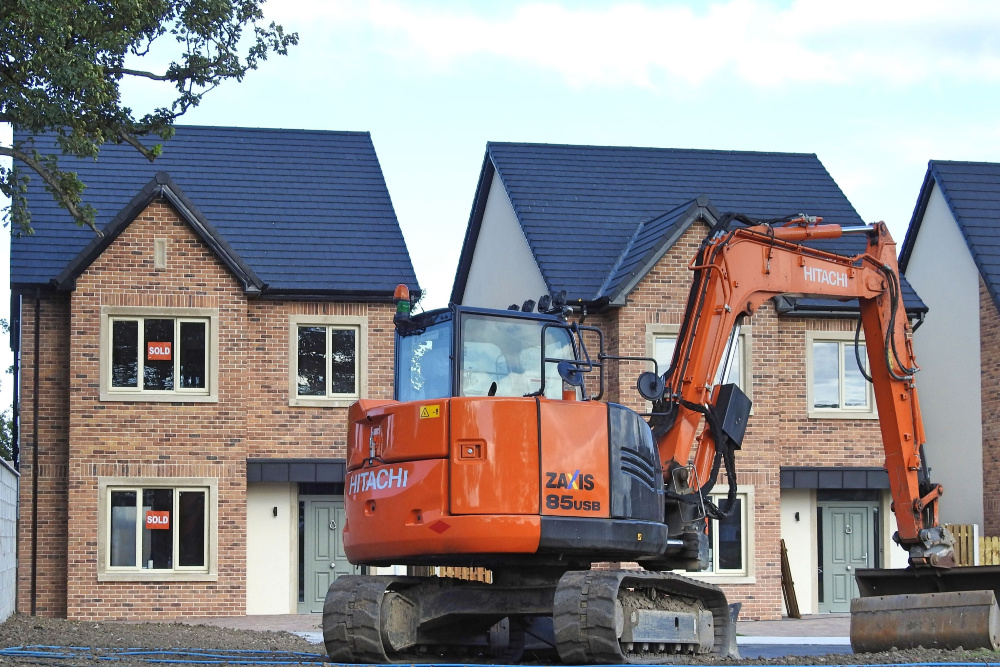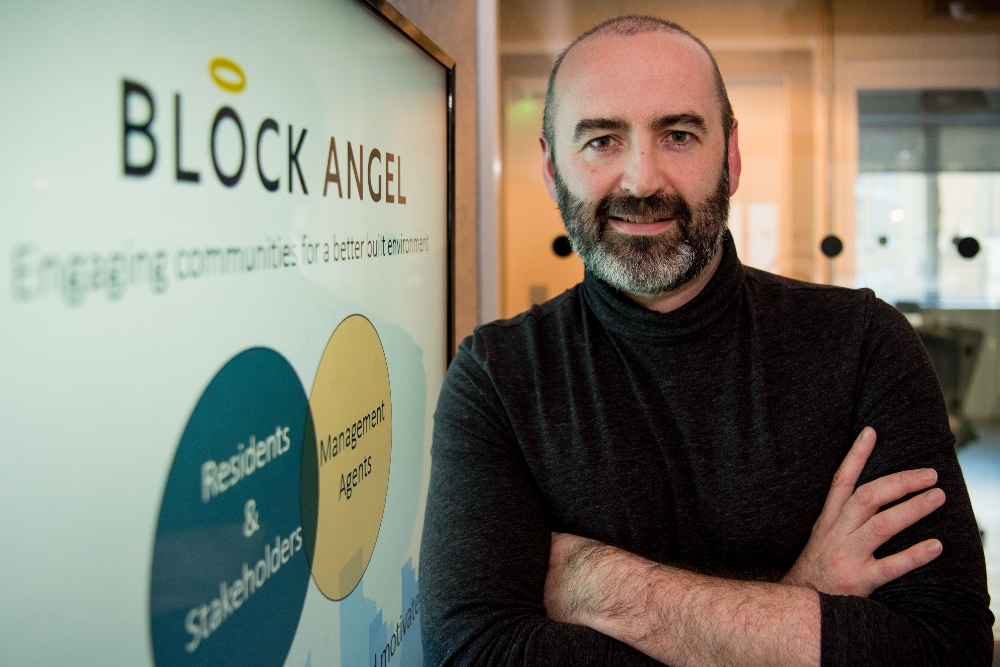2023 will be a year of two halves for the Irish property market, says Lisney, starting the year slow but accelerating in the second half.
€5.7bn was invested in commercial property assets in 2022 as accurately priced properties continued to attract attention, according to a new report from Lisney.
Entering 2023, the overall investment market is still a process of price discovery and limited activity is occurring or likely to occur in the coming months.
“We believe 2023 will also be a year of two halves, but with demand and activity starting slow and building over the year, especially into the latter half”
However, Lisney is optimistic for recovery around September 2023 and believes that once this comes, it will happen quickly.
Interesting times for Irish property market
“2022 was a strange year, at a societal and economic level, as well as in the Irish property market,” said Aoife Brennan, Lisney research director.
“We began the year optimistic for a post-Covid recovery with demand strong. However, as the fallout from the war in Ukraine took hold with rising interest rates and changing macroeconomic indicators, the market slowed mid-year.
“We believe 2023 will also be a year of two halves, but with demand and activity starting slow and building over the year, especially into the latter half as hopefully there is more certainty on interest rate stability and improvement in global economies. A trend that will carry across the entire year will be the increased awareness and acknowledgement of importance of ESG.”
Despite the various challenges which might be faced by the property sector in any given year, the most enduring will be the subject of sustainability and the role the real estate sector must play in this space. This will remain a central tenet of our strategy in 2023 as we work with colleagues and the communities in which we operate for a more sustainable future for all.”
While the overall commercial property market dynamics changed last summer as interest rate increases took hold, the industrial occupation sector remained strong in 2022. Currently, numerous high-profile occupiers are seeking space or negotiating deals. Entering the new year, combined requirements exceeded 460,000 sqm across Dublin, the equivalent to between 15 and 18 months take-up.
The two main talking points in the Dublin office market last year were the adjustments in the global tech industry and continued remote / hybrid working. Both trends resulted in the rise of grey space, where there is now 180,000 sqm available and more is due in 2023. Currently, this is 32% of all supply and accounts for 5.1 percentage points of the 13% city centre vacancy rate.
Works will continue on office buildings under construction (280,000 sqm currently), however there will be little or no new starts in the near term. Lisney states this is due to the higher cost of both finance and building materials.
Retail wise, Grafton Street had a very successful year in 2022. The vacancy rate (based on the number of units) fell to 7.6%, with seven new operators taking stores. These retailers were mainly from overseas and agreed deals on adjusted terms to those sought prior to the pandemic. While the vacancy rate is higher on Henry Street (close to 13%), there will be further interest in this area during the 2023. However, retailers will continue to assess the ongoing viability of their business, which may result in renegotiated property deals.
Heading into 2023, the number of residential properties for sale in Dublin was almost 60% higher than the 12 months previous. Lisney says this will mean fewer instances of frustrated buyers bidding far in excess of asking prices in the coming months.
Part of the supply increase is being fuelled by weary investors selling their buy-to-lets as life as a landlord has become too stressful with rent caps and eviction bans along with possible additional changes. Further investors will also leave the market this year which will be good news for buyers but unwelcome news for renters with even more difficulties in a severely undersupplied lettings market.
“2022 was a very exciting year in Lisney as we continued to invest heavily in the business, most notably the acquisition of the Sotheby’s International Realty franchise for our residential business which has proven a great success,” said David Byrne, Lisney managing director.
“In addition, we welcomed 37 new staff to the business in the year reflecting our growing client base across commercial, valuations and residential businesses
Key takeaways:
- Residential: Although the residential market was characterised by buyer frustration at the start of 2022 in Dublin, this pivoted during the summer months with the 10% to 13% annual growth rate in Dublin prices registered since mid-2021 easing, with purchasers becoming more price sensitive. This was due to the geopolitical and macroeconomic factors, most notably the war in Ukraine, rapid rises in the cost of living (particularly energy), interest rate hikes for the first time since 2011 and less disposable income.
- Development land: Significant construction cost inflation during 2022 (various materials increased anywhere between 10% and 110%) along with the higher cost of finance has impacted the viability of schemes. It is likely to be at least mid-2023 before demand for sites improves and into the second half of the year before activity levels increase. Many primary and secondary funders will remain largely absent from the market during the beginning of 2023. This will mean that cash purchasers will be the dominant buyer short-term.
- New homes: In 2022, nationwide housing completions were at their highest level in 13 years with an estimated 26,000 units finished, while this remains 25% higher than the previous three years, this still remains well below what is required. With rising construction costs taking hold, commencement notices for new schemes began to decline during summer 2022. This means that from mid-2023, new home supply will drop-off. First-time-buyers make up just over half of the new home market and continue to benefit from government backed schemes such as the Help-to-Buy scheme which remains in place for 2023 and 2024.
- Investment: In the investment sector, marketing dynamics quickly changed in Summer 2022. Entering 2023, the investment market is still a process of price discovery and limited activity is occurring or likely to occur in the coming months. There is a disconnect between vendors price expectations and what purchasers (and their credit committees) are willing to pay. Yields will drift further, however, Lisney is optimistic for recovery and activity around September 2023 and believes that once this comes, it will happen quickly.
- Offices: The two main talking points in the Dublin office market in 2022 were the adjustments in the global tech industry and continued remote / hybrid working options. Both trends resulted in an increase of grey space, where there is now 180,000 sqm available and more is due in the first half of 2023. Currently 32% of all supply accounts for 4.2 percentage points of the 13.2% vacancy rates across Dublin (or 5.1 percentage points of the 13% city centre vacancy rates). Lisney predicts there are three sectors to look out for in 2023: Highly profitable professional services firms; smaller scale indigenous tech; the Irish State.
- Industrial: There are numerous high-profile occupiers currently seeking space or negotiating deals, and entering 2023, combined requirements exceeded 460,000 sqm across Dublin. This is equivalent to between 15 and 18 months take-up. This suggests another good year for 2023. However, supply constraints are also likely to affect activity levels this year with Dublin’s vacancy rate now sub -2% with less than six months stock available. On a positive note, reconstruction of smaller / trade counter type units will recommence this year; none have been built in over 15 years.
- Retail: In the latter half of 2022, there appeared to be more acceptance that there has been a change in city centre footfall particularly regarding office workers and hybrid working. Tuesday, Wednesday and Thursday are the busiest weekdays in the city centre, however, there is a push from employers to increase the number of staff working from the office which may result in higher footfall during 2023. Retailers have reported that footfall is ultimately down two days a week.
- Cork: The Cork investment market will remain quiet for at least the first six months of this year. Most investors have adopted a wait-and-see approach, delaying their decisions until there is greater clarity on interest rate stabilisation (particularly in the EU and US) and a better understanding of when market prices will settle.





